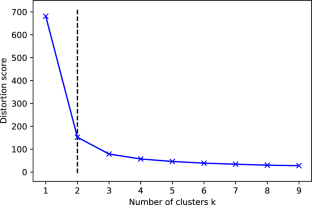The Journal of Supercomputing ( IF 3.3 ) Pub Date : 2024-04-11 , DOI: 10.1007/s11227-024-06071-3 Raneem Qaddoura , Hossam Faris

|
The intrusion detection system is responsible for revealing different intrusion activities, including the denial of service, man-in-middle, Mirai, Scan, and other types of intrusion activities. It is used in many applications, including the smart home Internet of Things networks, where security risks threaten the privacy of individuals. In this context, many works were proposed for detecting and classifying the different types of attacks. However, many challenges are identified for this type of problem, such as the large amount of data available, the imbalanced nature of the data, and the quality of detection and classification outcomes. This paper aims to address these challenges by proposing an approach that considers a metaheuristic-based random weight neural network to detect intrusion activities and classify the different types and subtypes of activities. The following points summarize the contribution of this paper. First, the automatic tuning of the neural network parameters where the weights, biases, regularization value, the number of neurons, and the type of activation function are optimized by different metaheuristic algorithms to produce high-quality results. Second, the proposed approach adopts a clustering with reduction technique to tackle the challenge of processing large volumes of data. Third, oversampling the dataset is also embedded in the proposed approach to avoid a biased classification of the majority class. The experiments are conducted based on a large dataset with more than half a million instances. The results show that the proposed approach outperforms the other classification approaches in geometric mean (G-Mean) and has promising results.
中文翻译:

基于过采样分段示例的进化随机权重神经网络用于物联网入侵检测
入侵检测系统负责揭示不同的入侵活动,包括拒绝服务、中间人、Mirai、扫描和其他类型的入侵活动。它被用于许多应用,包括智能家居物联网网络,其中安全风险威胁着个人的隐私。在这种背景下,人们提出了许多工作来检测和分类不同类型的攻击。然而,此类问题面临许多挑战,例如可用数据量大、数据的不平衡性以及检测和分类结果的质量。本文旨在通过提出一种方法来解决这些挑战,该方法考虑基于元启发式的随机权重神经网络来检测入侵活动并对活动的不同类型和子类型进行分类。以下几点总结了本文的贡献。首先,自动调整神经网络参数,其中权重、偏差、正则化值、神经元数量和激活函数类型通过不同的元启发式算法进行优化,以产生高质量的结果。其次,所提出的方法采用聚类缩减技术来应对处理大量数据的挑战。第三,所提出的方法中还嵌入了对数据集的过采样,以避免对多数类进行有偏见的分类。这些实验是基于包含超过 50 万个实例的大型数据集进行的。结果表明,所提出的方法在几何平均(G-Mean)方面优于其他分类方法,并且具有良好的结果。



























 京公网安备 11010802027423号
京公网安备 11010802027423号